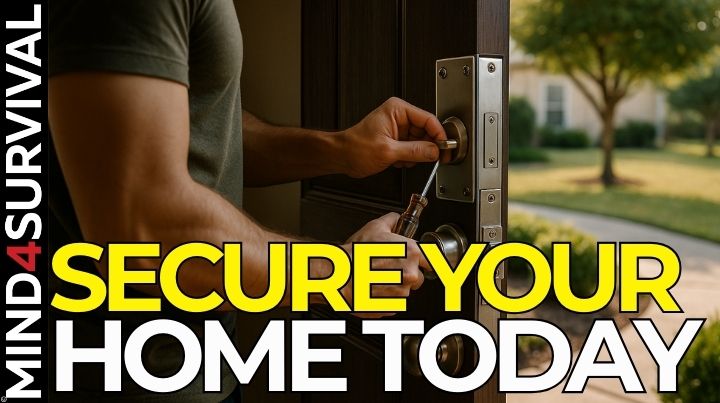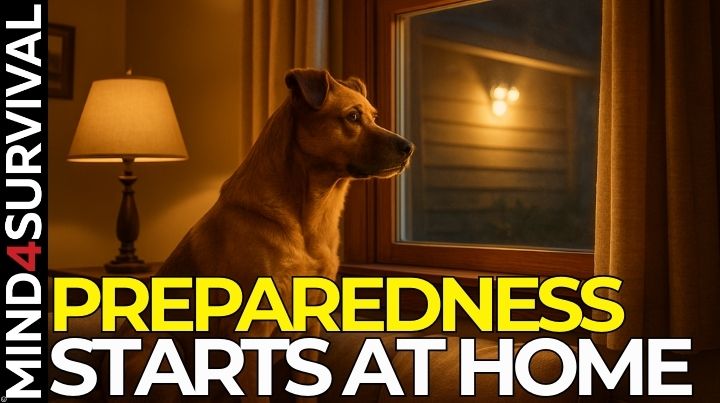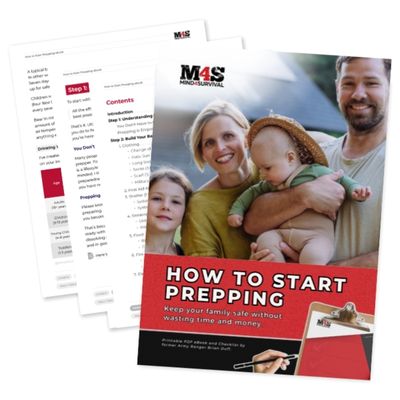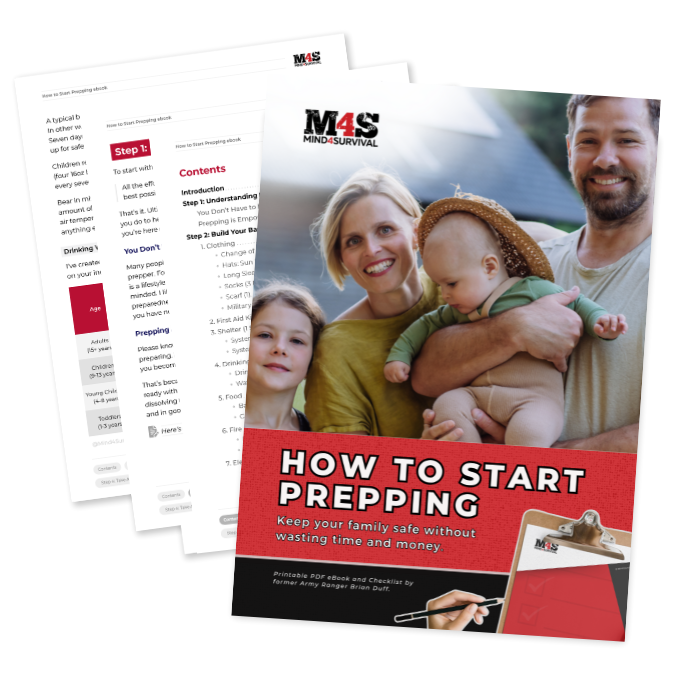5 Must-Know Tips for Securing Your Home from Threats

Your home should be your sanctuary—where you and your family feel safe, secure, and relaxed. Unfortunately, criminals see your home differently. To them, it's a target of opportunity worth considering. Whether they're after valuables or they want to harm a family member, they present a real danger.
Home security is no longer optional in today's unpredictable world—it's essential. From rising crime rates to natural disasters, every home faces some degree of risk. Yet too many people wait until after something bad happens to start securing their homes. Being proactive can prevent a break-in before it occurs and give your family the confidence to live without fear. And the best part? You don't need a fortress or a fortune to make meaningful improvements.
The good news? There's a proven strategy to secure your home: The Five D's of Home Security—Deter, Detect, Deny, Delay, and Defend. These principles provide a layered defense system that makes your home harder to target and easier to protect.
Why Securing Your Home Matters
Criminals thrive on the opportunity of others' perceived weaknesses. Unlocked doors, overgrown bushes, and poorly lit exteriors are open invitations. Securing your home isn't about paranoia—it's about preparedness. By applying the Five D's to your property, you create psychological, physical, and procedural barriers that discourage bad actors and protect what matters most.
Tip 1: DETER Intruders Before They Approach
The most effective form of home defense is one that makes criminals choose another target entirely.
Low-cost, high-impact deterrents include:
- Security Signs & Stickers: These signs create uncertainty and doubt even without a monitored system.
- Visible Vehicles: A parked car signals someone may be home. Move it periodically to reinforce the illusion.
- A Dog or Dog Illusion: Dogs bark. Bad guys don't like that. No dog? Place a leash, bowl, or “Beware of Dog” sign in plain view.
- Lighting & Landscaping: Well-lit paths and trimmed bushes remove hiding spots and make criminals feel exposed.
Your goal here is simple: make your home look like more trouble than it's worth.
Tip 2: DETECT Threats Early
If deterrence fails, the next best thing is early detection. The faster you know something's wrong, the more options you have.
Low-tech detection methods:
- Barking dog
- Crushed gravel paths around entryways
- Motion-sensitive wind chimes or bells
High-tech solutions:
- Security Cameras (CCTV): Monitor your property 24/7 with remote access.
- Alarm Systems: Choose systems with loud alarms and phone notifications.
- Motion Sensor Lighting: Install around driveways, doors, and blind spots.
These systems act as both deterrents and detection. Combined, they drastically reduce the element of surprise.
Tip 3: DENY Access to Your Home
Even if detected, criminals may still try to break in. Your job now is to make entry into your home impossible. Yes, that's the goal here—and while it may be a high mark to shoot for, it is your mark.
Fortify your entry points:
- Upgrade Locks: Use high-quality deadbolts. Install door reinforcements like Door Armor.
- Strengthen Frames: Replace standard screws with 3″ screws in hinges and strike plates.
- Window Locks: Always lock your windows. Install secondary locks or pin locks for added security.
Natural defenses:
- Plant Thorny Shrubs: Use rose bushes, holly, or cactus under windows or along fences.
- Fencing: Choose designs that are hard to climb but don't offer cover.
Pro Tip: Never hide a spare key outside. Criminals know all the usual spots.

Tip 4: DELAY Intrusion to Buy Time
If a determined intruder tries to break in, your next best defense is time. Every second you delay them gives you a better chance to escape, call for help, or prepare to defend yourself.
Delay strategies include:
- Layered barriers: Reinforce outer fences, doors, and internal doors (e.g. a locked bedroom door)
- Noise triggers: Glass-break sensors, door alarms, and loud sirens buy you time.
- Interior safe zones: Designate a room as your safe space with a locked door, phone, and supplies. Have each family member practice moving to it and securing it behind them.
Most burglaries last less than 12 minutes. If you delay their access long enough, they may bail before causing harm.
Tip 5: DEFEND as a Last Resort
Physical defense should only be used when all other options fail. It's critical to prepare your mindset and make this a family conversation before an emergency happens.
Defense considerations:
- Have a Plan: Know your escape routes. Assign roles. Discuss what to do if someone enters the home.
- Choose Your Tools: Whether it's a firearm, pepper spray, or blunt object—know how to use it, legally and safely.
- Train: Whatever your method(s) you choose to use, practice with it. The confidence and speed you develop over time, both matter under stress.
Most importantly, always prioritize avoidance over confrontation. No possession is worth you or your family's life.
Bonus: Don't Forget Digital Security
Your home's physical safety can be compromised through digital means. Smart locks, garage door openers, security cameras—all are potential access points.
Secure your systems by:
- Changing default passwords
- Keeping software and firmware updated
- Using two-factor authentication for smart apps
A layered security mindset includes digital hygiene.
TL;DR – Key Takeaways
- Use signs, lights, and landscaping to deter threats.
- Employ dogs, motion lights, and alarms to detect intruders early.
- Reinforce doors/windows and deny entry using physical and natural barriers.
- Delay intruders to give yourself time to respond or escape.
- Defend only when absolutely necessary—and have a plan before it's needed.
Final Thoughts: Secure Your Home, Empower Your Life
Securing your home isn't a one-time event—it's a mindset and an ongoing process. Even if you only have the time and money to take a step forward in your security development once a month, over time you dramatically reduce your vulnerability and improve your family's ability to respond under stress. With each layer you add, you buy more time, awareness, and options.
Remember, preparedness is peace of mind. When you know your home is protected, you sleep better, travel more confidently, and focus on what really matters—living your life.
🔐 Need a place to start? Check the bottom of this page for a free 39-page prepping guide.
💬 If this guide helped you, please share it with friends, family, or on social media—it could make a difference in someone else's life. Got a question, idea, or personal tip? Leave a comment below—we'd love to hear from you!
Additional Resources
Related Articles
FREE Guide
Read the Best Seller
Join Mind4Survival
Stay informed by joining the Mind4Survival! 100% Secure! 0% Spam!
Affiliate Disclosure...
Mind4Survival is a free, reader-supported information resource. If you make a purchase through our link, we may, at no cost to you, receive an affiliate commission.
Do You Want To Be Ready No Matter What?

Download our free 39-page guide with interactive, 7-Day Emergency Kit Checklist and take the first step toward real preparedness.
- Know exactly where to start.
- Save time and money.
- How-to build a complete Basic Emergency Kit.
- Level up your safety and security.
Join Mind4Survival
Stay informed by joining the Mind4Survival! 100% Secure! 0% Spam!





